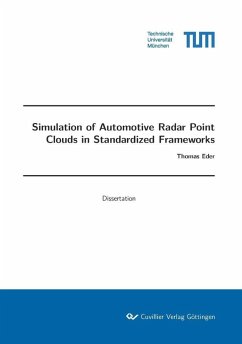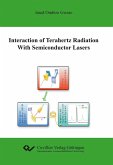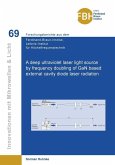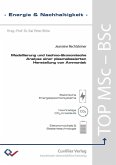The simulation of the vehicle’s environmental sensors, the so-called sensor simulation, is crucial for testing and validating autonomous driving. Automobile manufacturers are increasingly focusing on a standardized architecture with a high level of abstraction. In order to simulate the sensors, such as radar sensors, most realistically on a point cloud level, data-based methods are used in many cases. In general, and specifically in case of radar sensors, there are still challenges to be faced. Therefore, four research questions are addressed:
Is it possible to generate synthetic training data for data-based models? Which statistical approaches are suitable to simulate radar point clouds and how shall their learning capacities be evaluated? Is there a modeling approach to circumvent the disadvantages of statistical modeling? How to tackle the statistical nature of radar sensors during validation?
Die Simulation der Umfeldsensoren des Fahrzeugs, die sogenannte Sensorsimulation, ist für Test und Absicherung des autonomen Fahrens entscheidend. Die Automobilhersteller setzen dabei zunehmend auf eine standardisierte Architektur mit hohem Abstraktionsgrad. Um die Sensoren, wie z.B. Radarsensoren, möglichst realitätsnah auf Punktwolkenebene zu simulieren, werden in vielen Fällen datenbasierte Methoden eingesetzt. Im Allgemeinen und speziell im Fall von Radarsensoren gilt es noch immer zahlreiche Herausforderungen zu meistern. Daher werden in dieser Arbeit vier Forschungsfragen behandelt:
Können synthetische Trainingsdaten für datenbasierte Modelle generiert werden? Welche statistischen Ansätze sind geeignet, um Radar-Punktwolken zu simulieren und wie können die Ansätze bewertet werden? Gibt es einen Modellierungsansatz, um Nachteile der statistischen Modellierung zu umgehen? Wie kann die statistische Natur bei der Validierung berücksichtigt werden?
Dieser Download kann aus rechtlichen Gründen nur mit Rechnungsadresse in A, B, BG, CY, CZ, D, DK, EW, E, FIN, F, GR, HR, H, IRL, I, LT, L, LR, M, NL, PL, P, R, S, SLO, SK ausgeliefert werden.









